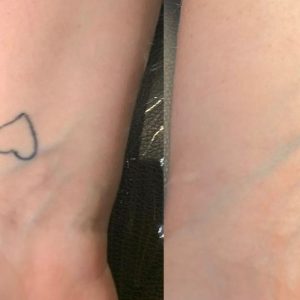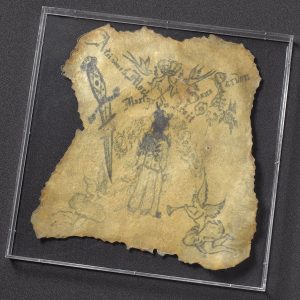Before Laser – A History Of Tattoo Removal
Not many people get a tattoo with the intention of having it removed. Although, nowadays, it is a far less permanent commitment than it used to be, given the accessibility and advancement of laser removal technology. However, the history of getting rid of unwanted tattoos from skin is quite far from today’s civilised salons and offering across tattoo studios. Let’s take a look at how people used to deal with getting rid of ink back in the day. Just a small warning before you read on – it is not for the squeamish.
Unwanted markings required drastic measures
 Today, those seeking to have tattoos removed may do so because their aesthetic preferences have changed, a relationship may have ended (is there such a thing as a curse of the significant-other-name tattoo?), or ideologies once proudly displayed may have shifted. Or, sometimes, it is to make space for a new tattoo in place of the old one. Skin is precious real estate for body art, after all.
Today, those seeking to have tattoos removed may do so because their aesthetic preferences have changed, a relationship may have ended (is there such a thing as a curse of the significant-other-name tattoo?), or ideologies once proudly displayed may have shifted. Or, sometimes, it is to make space for a new tattoo in place of the old one. Skin is precious real estate for body art, after all.
Meanwhile, if we look a little further back in time, those most likely to be tattooed (particularly in the West) were soldiers or slaves, marked to prevent desertion or escape. The same was true for those branded as criminals or sentenced to penal colonies. As such, if someone did manage to escape and wished to begin a new life, they had to get rid of the incriminating markings.
Sixth-century doctor used nitrate and sap
One of the first accounts of tattoo removal is found in a medicinal encyclopaedia called the Tetrabiblon. This was written by a doctor named Aetius, who practised his profession in Alexandria and Constantinople in the 6th century. In the book, he stated,
“They call stigmata things inscribed on the face or some other part of the body, for example on the hands of soldiers … In cases where we wish to remove such stigmata, we must use the following preparations … When applying, first clean the stigmata with niter, smear them with resin of terebinth, and bandage for five days … The stigmata are removed in twenty days, without great ulceration and without a scar.”
FYI, terebinth is a foul-smelling sap used to remove stains and dyes. Niter is potassium nitrate, KNO3. It is a soft, white, highly soluble mineral and a source of nitrate.

Early methods of tattoo removal carried risk of infections
Other methods of tattoo removals over the eras have also included things like stripping away layers of the skin, often causing significant scarring and with great risk of infection. Tattoos were also removed surgically by simply cutting away the skin with the ink, and suturing the skin around it back together. Of course, this also caused substantial scars and could even restrict movement and functionality of the limb as the rest of the skin was stretched too taught to make up for the missing piece.
We will look more closely at what else people have put themselves through to get rid of unwanted tattoos in the next part of this post.
